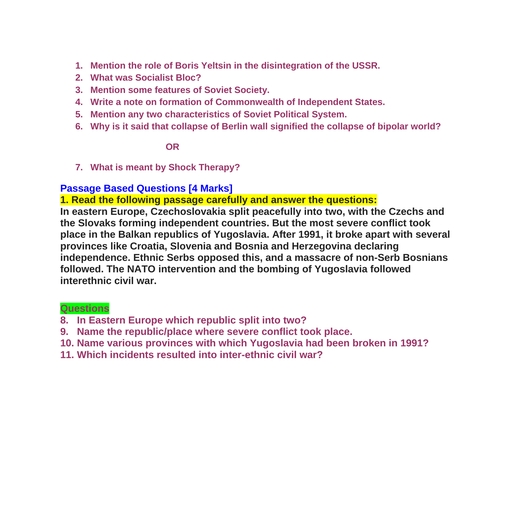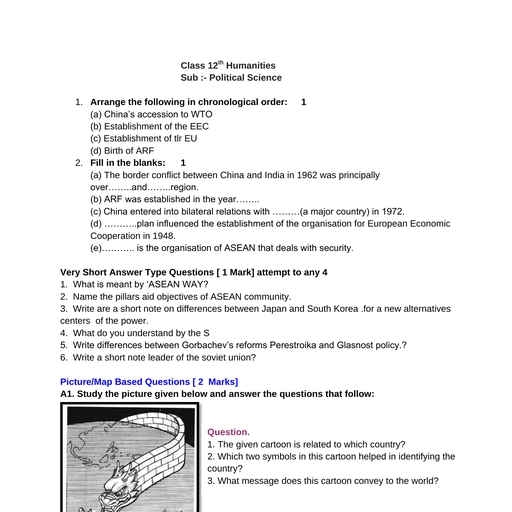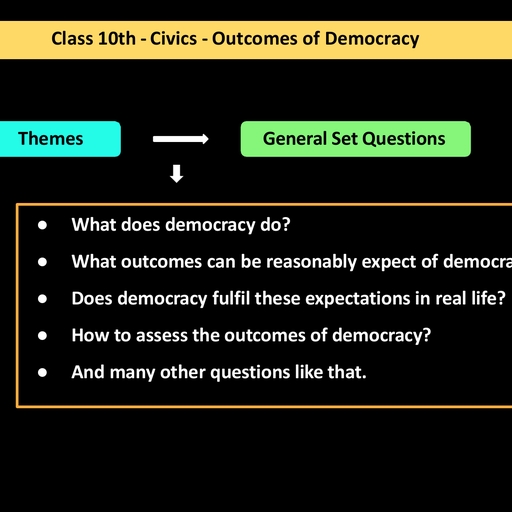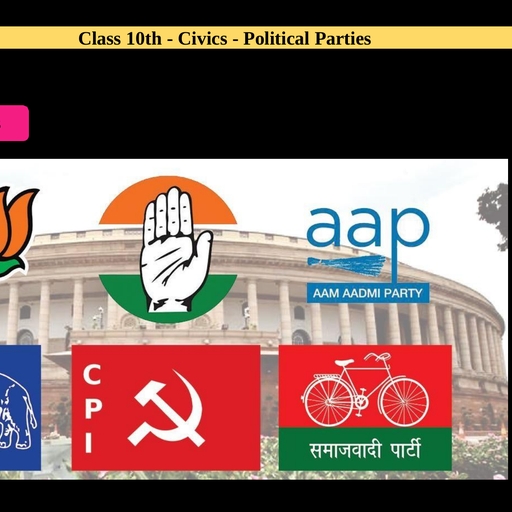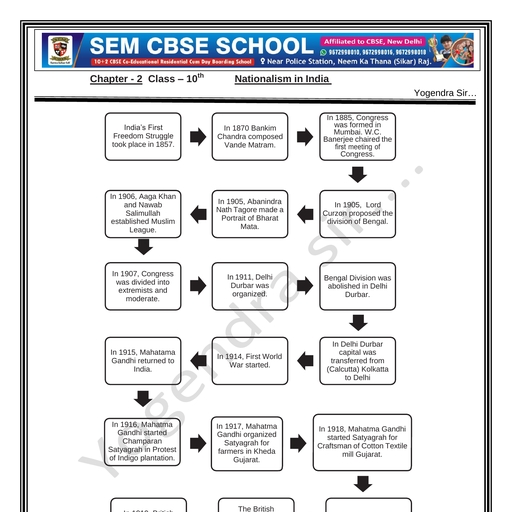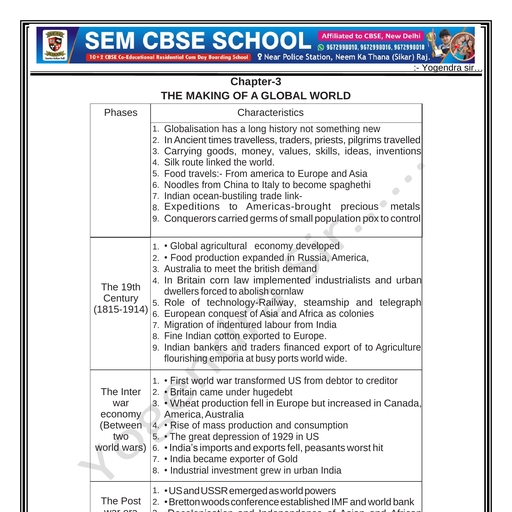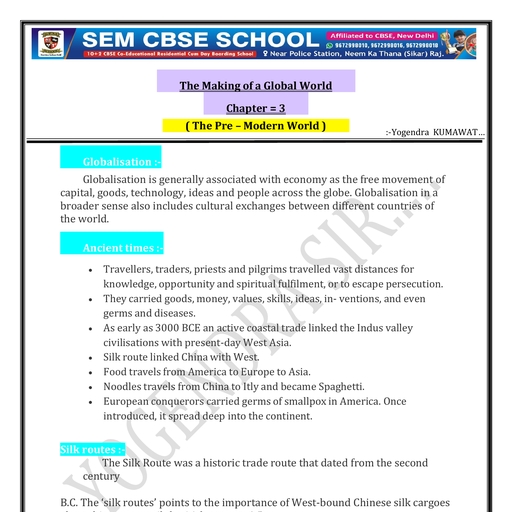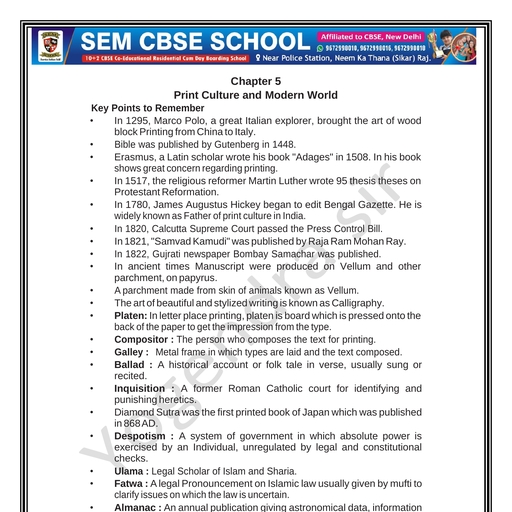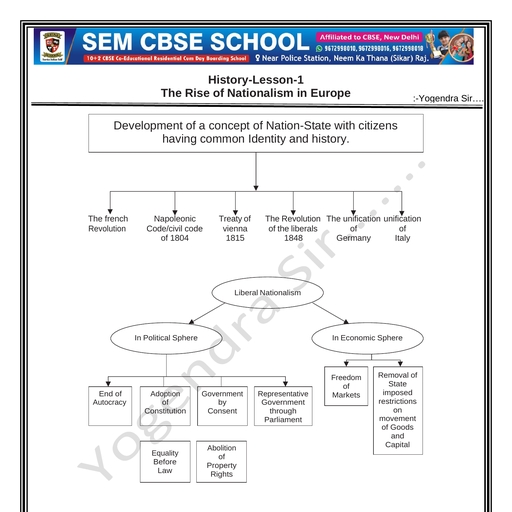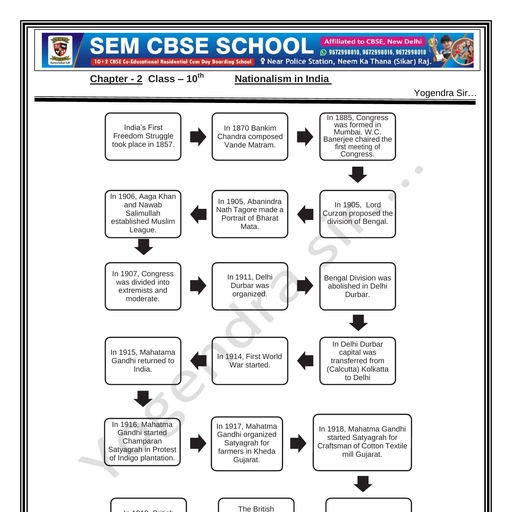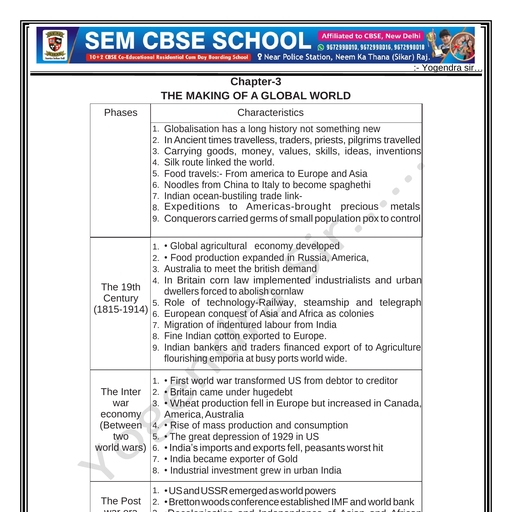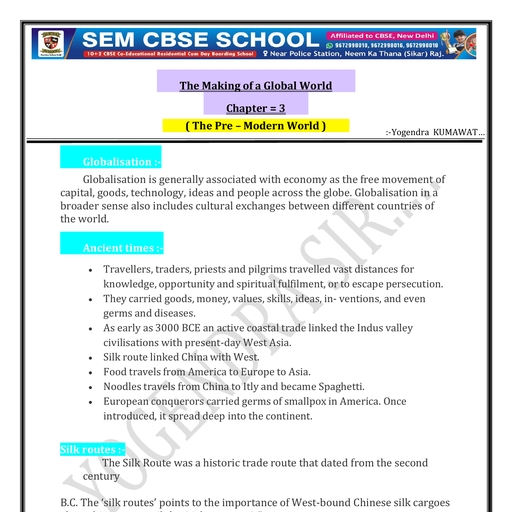Page 1 :
SEM CBSE SCHOOL(NKT), Near police station Neem ka thana (Sikar ) Rajasthan 332713 Mo.9672998010,16,18, , Class-12th Political Science, No.8. Enviroment and Natural Resources., ., (Notes), January 19, 2022 by :-Yogendra kumawat, , Environmental Concerns in Global Politics, , , , , , , , , , , , , , There have been many environmental issues that are concerns of the global, politics., There is a decline in the availability of cultivable land and a substantial portion, of existing agricultural land is losing fertility., Around 1.2 billion people in developing countries have no access to safe water, and 2.6 billion have no access to sanitation according to the Human, Development Report, 2006., The loss of biodiversity continues due to destruction of habitat in areas which, are rich in species. The act of deforestation takes place for personal gains,, removing the natural inhabitants., Another danger to ecosystems and human health is a steady decline in the, total amount of ozone in the Earth’s stratosphere. Even the coastal waters are, becoming increasingly polluted due to land-based activities., The environmental consequences of economic growth acquired an increasingly, political character from the 1960s onwards., International agencies like the United Nations Environment Programme, (UNEP), started holding international conferences to deal with environment, issues., Earth summit or Rio summit was held in Rio de Janeiro, Brazil in June 1992, which produced conventions dealing with climate change, biodiversity, forestry, and recommended a list of development practices called ‘Agenda 21’., , The Protection of Global ‘Commons’, , , , , , , , Commons’ are the resources shared by the community as a whole not, individually., In the world, there are some areas which are located outside the sovereign, jurisdiction of any one state and hence require common governance by the, international community. This is known as Global Commons. They include, Earth’s atmosphere, Antarctica, the ocean floor, and outer space., A number of agreements were signed which includes the Antarctic Treaty, (1959), the Montreal Protocol (1987) and the Antarctic Environmental Protocol, (1991)., The history of outer space as a global commons shows that the management, of these areas is thoroughly influenced by North-South inequalities., , Page | 1
Page 2 :
Common but Differentiated Responsibilities, , , , , , , , , , , , , There were differences between the countries of the North and the South over, environment issues., The Northern countries want everyone to be equaliy responsible for ecological, conservation., The developing countries of the South believes that the ecological degradation, is the product of industrial development undertaken by the developed, countries., In the Rio summit, 1992, it was accepted that special needs of the developing, countries must be taken into account in the development and interpretation of, rules of international environmental law., The 1992 United Nations Framework Convention on Climate Change, (UNFCCC) also provides that the parties should act on the basis of equity., It was accepted that a large amount of greenhouse gas emission has, originated in developed countries and per capita emissions in developing, countries are relatively low., Developing countries like India and China were exempted from the, requirements of the Kyoto Protocol., The Kyoto Protocol is an international agreement setting targets for, industrialised countries to cut their greenhouse gas emissions., , Commons Property Resources, , , , , It represents common property for the group but with a rule that members of, the group have both rights and duties with respect to the nature, levels of use, of a given resource., But issues like privatisation, agricultural intensification, population growth and, ecosystem degradation have caused common property to dwindle in size., , India’s Stand on Environmental Issues, , , , , , , , , , India has signed and ratified Kyoto Protocol (1997) in August 2002. Developing, countries like India and China were exempt from the requirements of the Kyoto, Protocol., At the G-8 meeting in June 2005, India pointed out that the per capita emission, rates of the developing countries are a tiny fraction of those in the developed, world., The Indian Government is already participating in global efforts through a, number of programmes like Energy Conservation Act (2011), Electricity Act of, 2003 and so on., In 1997, a review of the implementation of the agreements at the Earth summit, in Rio was undertaken by India., India suggested that the developing countries must get financial resources and, clean technologies from the developed countries in order to meet UNFCCC, commitments., , Page | 2
Page 3 :
Environmental Movements, , , , , , , , Some of the most significant responses to the challenge of environmental, degradation has come from groups of environmentally conscious volunteers, working in different parts of the world., The forest movements of the South, in Mexico, Chile, Brazil, Malaysia,, Indonesia, Continental Africa and India are faced with enormous pressures, regarding forest clearing., Another example is of the group which is working against mineral extraction, company as it leads to displacement of communities etc., Another groups of movements are those involved in struggles against megadams. In India, Narmada Bachao Aandolan is one of the best known of these, movements., , Resource Geopolitics, , , , , , , , , Resource geopolitics means who gets what, when, where and how., Throughout the cold war the industrialised countries of the North adopted a, number of methods to ensure a steady flow of resources., Oil countries to be the most important resource in global strategy. The, immense wealth associated with oil generates political struggles to control it., West Asia, specifically the Gulf region, accounts for about 30 per cent of global, oil production., Another important resource relevant to global politics is water. Regional, variations and scarcity of freshwater in some parts of the world is a leading, source of conflicts in the 21st century., A number of studies show that countries that share rivers and many countries, do share rivers are involved in military conflicts with each other., , The Indigenous People and their Rights, , , , , , , , , , As per the United Nations, indigenous population comprises the descendants, of peoples who inhabited the present territory of a country at the time, when persons of a different culture arrived there from other parts of the world., Indigenous people voices in world politics to treat them equally with other, communities., The areas occupied by indigenous people include Central and South America,, Africa, India and South-East Asia., The indigenous people appeal to governments to come to terms with the, continuing existence of indigenous nations as enduring communities with an, identity of their own., In India, indigenous people applies to the scheduled tribes who constitute, nearly 8 per cent of the population of the country., Issues related to the rights of the indigenous communities have been neglected, in domestic and international politics for very long., , Page | 3
Page 4 :
FACTS THAT MATTER, 1. Environmental concerns in Global politics cover losing fertility of agricultural land,, and grazing, depletion of water resources as well as loss of bio-diversity, real danger, to eco-system and coastal pollution, deteriorating of marine environment,, 2. Environmental consequences of economic growth acquired a political shape from, 1960s onwards, following a book published in 1972 namely Limits To Growth and, Initiatives taken by United Nations Environment Programme (UNEP) to promote coordination and effective response on environment at global level., 3. The Earth Summit held in Rio-de-Janerio, Brazil in 1992 revealed different views, i.e. global north (the first world countries) and global south (the third world countries)., Global North was concerned with the issues of ozone depletion and global warming, and global south focused on economic development and environment management, by Agenda 21., 4. Global commons refer to the areas or regions which require common governance, by international community on major problems of ecological issues i.e. discovery of, ozone hole over Antarctic, earth’s atmosphere and ocean floor associated with, technology and industrial development., 5. The Rio Declaration at the Earth Summit in 1992 adopted the principle of common, but differentiated responsibilities ‘refering special needs of developing countries in, the fields as development, application and interpretation of rules of international, environmental law to protect environment by both developing nations in a, responsible manner., 6. The 1992 United Nations Framework Convention on Climate Change (UNFCCC), also emphasised to protect the climate system on the basis of equity and in, accordance with their common but differentiated responsibilities and capabilities., Example-Largest and current global emissions of greenhouse gases originated in, developed nations, hence low emissioned developing countries like India and China, have been exempted from Kyoto Protocol held in Japan in 1997., 7. Common property resources refer to a group who have both rights and duties with, respect to nature, levels of use and the maintenance of a given resource with mutual, understanding and practices i.e. management of sacred groves on state owned, forest land., 8. India plays a dominating role on the environmental issues as it signed and ratified, 1997 Kyoto Protocol in August 2002 to follow common but differentiated, responsibilities and India is a wary of recent discussions with UNFCCC about, introducing binding commitments. India participated in global efforts by introducing, National Autofuel Policy, Electricity Act, 2003 and National Mission on Biodiesel., Besides, India supports to adopt a common position by SAARC countries on major, environmental issue to have a greater say regionwise., Page | 4
Page 5 :
9. Environmental movements are the movements of groups which are, environmentally conscious to challenge environmental degradation at national or, international level aiming at raising new ideas and long term vision i.e. in Mexico,, Chille, Brazil, Malaysia, Indonesia, India faced enormous pressure., 10. Environmental movements are categorised as forest movements, movements, against mining and mineral industry for creating Water Pollution and Anti Dam, Movement., 11. ‘Resources Geopolitics’ is all about who gets what, when, where and how? The, practices of neo-colonialism spread on a large scale and throughout a cold war,, industrialised countries adopted methods to ensure a steady flow of resources by, deployment of military forces near exploitation sites and sea-lanes of, communications, the stock pilling of strategic resources and efforts to prop up, friendly governments., 12. The global economy relied on oil as a portable and essential fuel. The history of, petroleum is the history of war and struggle. Water is another important resource, relevant to global politics. Regional variations and increasing scaring of fresh water, may also lead to conflicts in the world to play politics., 13. Indigenous people bring the issues of environment, resources and politics, together. Indigenous people live with their social, economic, cultural customs in, particular areas who speak of their struggle, agenda, and rights to have equal status, i.e. Island states in ocean region, Central and South America, Africa, India and South, East Asia., 14. The issues related to rights of indigenous communities have been neglected in, domestic and international politics for long. The World Council of Indigenous People, was formed in 1975 which became first of 11 indigenous NGOs to receive, consultative status in the UN., WORDS THAT MATTER, 1. Earth Summit: A conference held in Rio de Janeiro (Brazil) in June 1992 on, Environment and Development to deal with various environmental problems., 2. Agenda 21: The Earth Summit recommended a list of practices in reference of, development to attain sustainability, called Agenda 21., 3. Kyoto Protocol: An international agreement setting targets for industrialised, countries to cut their greenhouse gas emissions was agreed to in 1997 in, Kyoto in Japan, based on principles set out in UNFCCC., 4. UNFCCC: The 1992 United Nations Framework Convention on Climate, Change provided that parties should act to protect the climate system with, common but differentiated responsibilities., 5. Indigenous People: Indigenous people comprise the descendants of peoples, who inhabited the present territory of a country at the time when persons of, different culture arrived there from different parts of the world., Page | 5
Page 6 :
Chapter - 8 Environment and Natural Resources Class 12, Political Science Notes, Environmental Concerns in Global Politics, • Global politics are concerned with variety off environmental issues such as losing, fertility of agricultural land, depletion of water resources, loss of bio-diversity,, deteriorating of marine environment, decline in the total amount of ozone in the Earth’s, stratosphere and coastal pollution., • The United Nations Conference on Environment and Development held in Rio de, Janeiro, Brazil, in June 1992 which was attended by 170 states, thousands of NGOs and, many multinational corporations., • The 1987 Brundtland Report, Our Common Future, had warned that traditional patterns, of economic growth were not sustainable in the long term., • The Rio Summit produced conventions dealing with climate change, biodiversity,, forestry, and recommended a list of development practices called ‘Agenda 21’ in which, there was a consensus on combining economic growth with ecological responsibility., This approach to development is commonly known as ‘sustainable development’., The Protection of Global Commons, • ‘Commons’ are those resources which are not owned by anyone but rather shared by a, community., For example, a ‘common room’, a ‘community centre’, a park or a river., • There are some regions of the world which are located outside the sovereign, jurisdiction of any one state, and therefore require common governance by the, international community. These are known as global commons. It include the earth’s, atmosphere, Antarctica, the ocean floor, and outer space., • Agreements such as the 1959 Antarctic Treaty, the 1987 Montreal Protocol, and the, 1991 Antarctic Environmental Protocol are some of the cooperation over the global, commons., • The history of outer space as a global commons shows that the management of these, areas is thoroughly influenced by North-South inequalities., Common but Differentiated Responsibilities, • The Northern countries want everyone to be equally responsible for ecological, conservation., • The developing countries of the South believes that the ecological degradation is the, product of industrial development undertaken by the developed countries., • The Rio Declaration at the Earth Summit in 1992 adopted the principle of common but, differentiated responsibilities. It was accepted that special needs of the developing, , Page | 6
Page 7 :
countries must be taken into account in the development and interpretation of rules of, international environmental law., • The 1992 United Nations Framework Convention on Climate Change (UNFCCC) also, emphasised to protect the climate system on the basis of equity and in accordance with, their common but differentiated responsibilities and capabilities., • The Kyoto Protocol is an international agreement setting targets for industrialised, countries to cut their greenhouse gas emissions., • The protocol was agreed to in 1997 in Kyoto in Japan, based on principles set out in, UNFCCC., Common Property Resources, • Common property represents common property for the group. It represents common, property for the group but with a rule that members of the group have both rights and, duties with respect to the nature, levels of use of a given resource., • A combination of factors, including privatisation, agricultural intensification, population, growth and ecosystem degradation have caused common property to dwindle in size,, quality, and availability to the poor in much of the world., India’s Stand on Environmental Issues, • India signed and ratified the 1997 Kyoto Protocol in August 2002., • At the G-8 meeting in June 2005, India pointed out that the per capita emission rates of, the developing countries are a tiny fraction of those in the developed world., • The Indian government is already participating in global efforts through a number of, programmes. India’s National Auto-fuel Policy mandates cleaner fuels for vehicles. The, Energy Conservation Act, passed in 2001, outlines initiatives to improve energy, efficiency. The Electricity Act of 2003 encourages the use of renewable energy., • India is also of the view that the SAARC countries should adopt a common position on, major global environment issues, so that the region’s voice carries greater weight., Environmental Movements: One or Many?, • Environmental Movements are led by groups of environmentally conscious volunteers, working in different parts of the world. Some of them work at the international level, but, most of them work at the local level., • The forest movements of the South in Mexico, Chile, Brazil, Malaysia, Indonesia,, Continental Africa and India are faced enormous pressures., • Another group of movements are those involved in struggles against mega-dams. In, every country where a mega-dam is being built, one is likely to find an environmental, movement opposing it., • The early 1980s saw the first anti-dam movement launched in the North, namely, the, campaign to save the Franklin River and its surrounding forests in Australia. India has, Page | 7
Page 8 :
had some of the leading anti-dam, pro-river movements. Narmada Bachao Andolan is, an example of such type of movements., Resource Geopolitics, • Resource geopolitics is all about who gets what, when, where and how., • Throughout a cold war, industrialised countries adopted methods to ensure a steady, flow of resources by deployment of military forces near exploitation sites and sea-lanes, of communications, the stock pulling of strategic resources and efforts to prop up friendly, governments., • A particular concern was Western control of oil in the Gulf and strategic minerals in, Southern and Central Africa., • The global economy relied on oil for much of the 20th century as a portable and, indispensable fuel. fuel. The history of petroleum is the history of war and struggle., • Water is another important resource relevant to global politics. Regional variations and, increasing scaring of fresh water may also lead to conflicts in the world to play politics., The Indigenous People and their Rights, • The UN defines indigenous populations as peoples who inhabited the present territory, of a country at the time when persons of different culture or ethnic origin arrived there, from other parts of the world and overcame them., • Indigenous people today live more in conformity with their particular social, economic,, and cultural, customs and traditions than the institutions of the country of which they now form a part., • Like other social movements, indigenous people speak of their struggles, their agenda, and their rights., • Indigenous people occupy areas in Central and South America, Africa, India (where, they are known as Tribals) and Southeast Asia., • In India, indigenous people applies to the scheduled tribes who constitute nearly 8 per, cent of the population of the country., • The World Council of Indigenous People was formed in 1975 which became first of 11, indigenous NGOs to receive consultative status in the UN., , Page | 8



